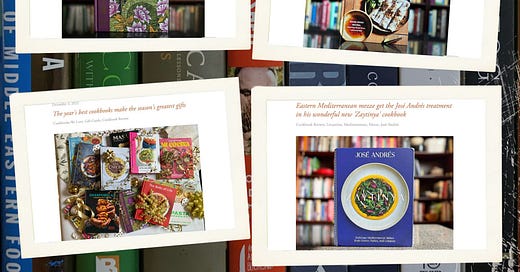The recipe 'fair use' no one's discussing
Cookbook critics can reproduce recipes with impunity.
Every few years, the internet blows up with debates about recipes and intellectual property. Late last month, when two food writers accused an influencer of plagiarizing their recipes in a new cookbook, it opened up a familiar can of worms.
Four years ago, for instance, when a corn-on-the-cob trompe-l’oeil cupcake appeared on the cover of a women’s magazine, cookbook editor Rux Martin noticed that it bore a striking similarity to one in a cookbook she had edited years before, Hello, Cupcake!
The basic takeaways from these debates, after all the intellectual property lawyers and publishers weigh in, are always the same:
In terms of U.S. copyright law, recipes are famously difficult to protect. From the U.S. Copyright Office website:
“A mere listing of ingredients is not protected under copyright law. However, where a recipe or formula is accompanied by substantial literary expression in the form of an explanation or directions, or when there is a collection of recipes as in a cookbook, there may be a basis for copyright protection.”
The evolution of cooking is all about borrowing from recipes, riffing on them and sharing the results.
The only ethical way for writers to do that is to acknowledge the source. Lifting a recipe’s ingredients and method may be legal, but without proper attribution it may not be ethical.
“On almost every page of English Food by Jane Grigson and Roast Chicken and Other Stories by Simon Hopkinson with Lindsey Bareham, the authors never shut up about… wait for it… people other than themselves!
They attribute recipes to their friends, old colleagues, restaurants they’ve visited, and, of course, books they love.”
Five years ago, the New York Times completely changed the way they attribute recipes. It was their way of righting the wrong of having adapted without crediting their sources. It was a giant project — and no doubt hugely important to them, as New York Times Cooking is an essential part of their business model.
The current recipe-theft brouhaha will soon be forgotten, or eclipsed by another, and the biggest takeaway for all of us responsible writers will be simply that: Be respectful. Be nice. Always attribute, and do not reproduce recipes verbatim.
Fair use in criticism
But wait — there is one area in which it is allowable, and even ethical, to reproduce recipes verbatim: Criticism and certain other types of writing about cookbooks. Somehow, this is rarely part of the recipes-as-intellectual-property discussion.
When a writer reviews a cookbook — or any type of book — they may reproduce entire passages for purposes of criticism. That’s the principal of “fair use” that’s also outlined on the U.S. Copyright Office website:
“How much of someone else's work can I use without getting permission?
Under the fair use doctrine of the U.S. copyright statute, it is permissible to use limited portions of a work including quotes, for purposes such as commentary, criticism, news reporting, and scholarly reports. There are no legal rules permitting the use of a specific number of words, a certain number of musical notes, or percentage of a work.”
Giving critics the right to reproduce passages is essential in our society to enable a lively and robust exchange of ideas. You, know, what’s protected by the First Amendment.
This is why, when I consulted two I.P. attorneys in the process of securing a trademark for Cooks Without Borders, they both advised me that it was fine to reproduce entire recipes in the service of a cookbook review. Further, they added that doing so was unlikely to be challenged legally, as:
Reviewing a cookbook benefits the cookbook author.
How does it do that? It gets the word out to the cookbook-buying public that the cookbook exists. A responsible cookbook review on a website or blog will link to the title on a bookselling site, so readers can directly and easily purchase it.





